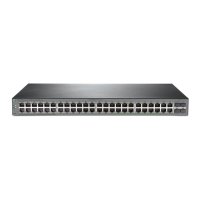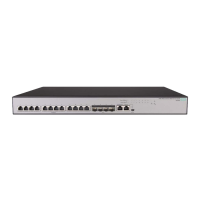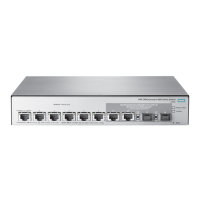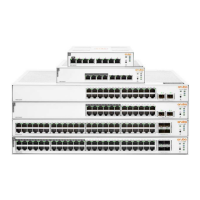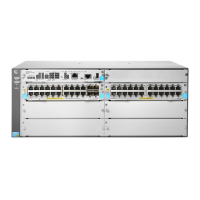have to use crossover cables, although crossover cables can also be used for any of the connections.
(The 10/100/1000-T ports support the IEEE 802.3ab standard, which includes the “Auto-MDIX” feature.)
If you connect a switch twisted-pair port to another switch or hub, which typically have MDI-X ports, the
switch port automatically operates as an MDI port. If you connect it to an end node, such as a server or
PC, which typically have MDI ports, the switch port operates as an MDI-X port. In all cases, you can use
standard straight-through cables or crossover cables.
If you happen to use a correctly wired crossover cable, though, the switch will still be able to automatically
detect the MDI/MDI-X operation and link correctly to the connected device.
NOTE:
Using Fixed Configurations. If the port configuration is changed to any of the fixed configurations
though, for example 100 Mbps/full duplex, the port operates as MDI-X only and the correct cable
type must be used: for connections to MDI ports, such as end nodes, use a straight-through cable;
for connections to MDI-X ports, such as on hubs and other switches, use a crossover cable.
Other Wiring Rules:
• All twisted-pair wires used for 10 Mbps, and 100 Mbps operation must be twisted through the entire
length of the cable. The wiring sequence must conform to EIA/TIA 568-B (not USOC). See “Twisted-
Pair Cable Pin Assignments” later in this appendix for a listing of the signals used on each pin.
• For 1000BASE-T connections, all four pairs of wires in the cable must be available for data
transmission.
• For 10 Mbps connections to the ports, you can use Category 3, 4, or 5 unshielded twisted-pair cable,
as supported by the IEEE 802.3 Type 10BASE-T standard.
• For 100 Mbps connections to the ports, use 100-ohm Category 5 UTP or STP cable only, as supported
by the IEEE 802.3u Type 100BASE-TX standard.
• For 1000 Mbps connections, 100-ohm Category 5e or better cabling is recommended.
Straight-through Twisted-Pair Cable for10 Mbps or 100 Mbps Network
Connections
Because of the Auto-MDIX operation of the 10/100 ports on the switch, for all network connections, to
PCs, servers or other end nodes, or to hubs or other switches, you can use straight-through cables.
If any of these ports are given a fixed configuration, for example 100 Mbps/Full Duplex, the ports operate
as MDI-X ports, and straight-through cables must be then used for connections to PC NICs and other
MDI ports.
Straight-through Twisted-Pair Cable for10 Mbps or 100 Mbps Network Connections 41
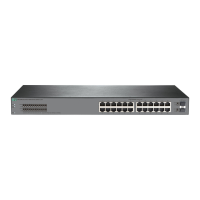
